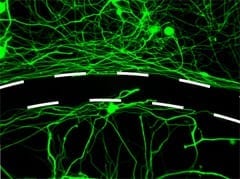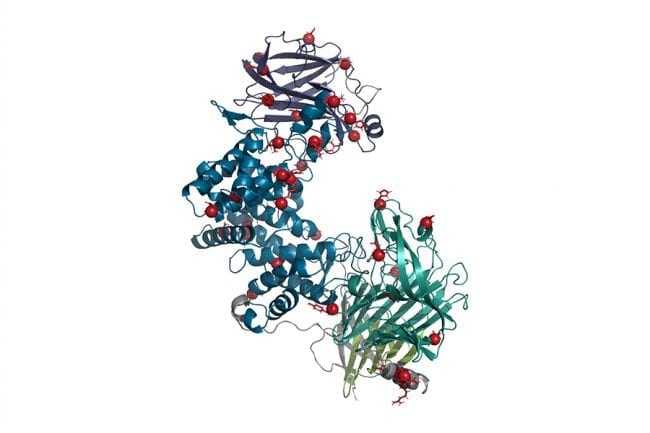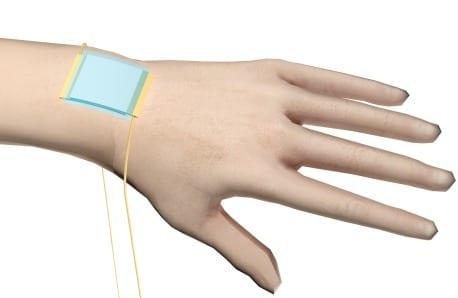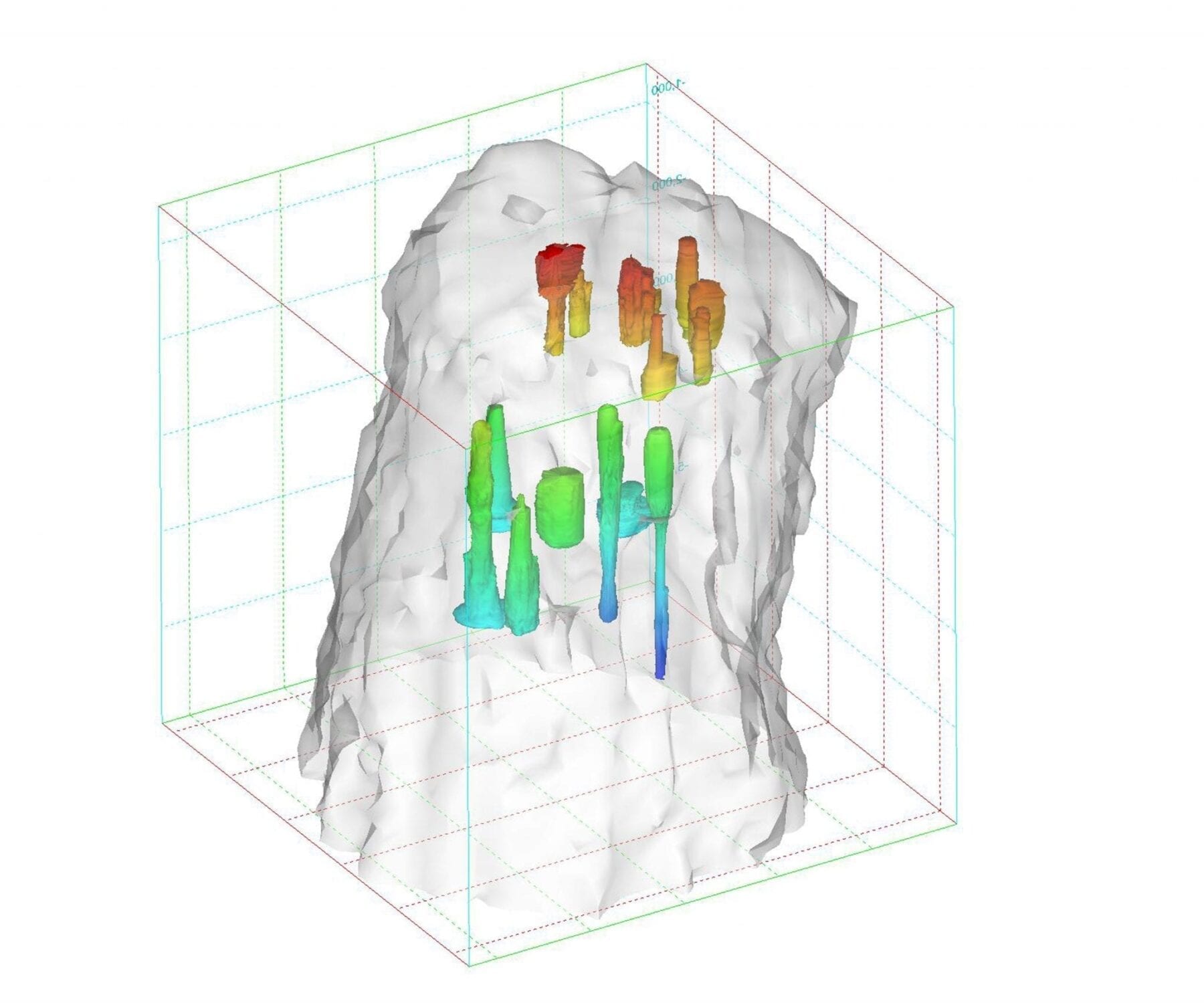
Injections of a new drug may partially relieve paralyzing spinal cord injuries, based on indications from a study in rats, which was partly funded by the National Institutes of Health.
The results demonstrate how fundamental laboratory research may lead to new therapies.
“We’re very excited at the possibility that millions of people could, one day, regain movements lost during spinal cord injuries,” said Jerry Silver, Ph.D., professor of neurosciences, Case Western Reserve University School of Medicine, Cleveland, and a senior investigator of the study published in Nature.
Every year, tens of thousands of people are paralyzed by spinal cord injuries. The injuries crush and sever the long axons of spinal cord nerve cells, blocking communication between the brain and the body and resulting in paralysis below the injury.
On a hunch, Bradley Lang, Ph.D., the lead author of the study and a graduate student in Dr. Silver’s lab, came up with the idea of designing a drug that would help axons regenerate without having to touch the healing spinal cord, as current treatments may require.
“Originally this was just a side project we brainstormed in the lab,” said Dr. Lang.
After spinal cord injury, axons try to cross the injury site and reconnect with other cells but are stymied by scarring that forms after the injury. Previous studies suggested their movements are blocked when the protein tyrosine phosphatase sigma (PTP sigma), an enzyme found in axons, interacts with chondroitin sulfate proteoglycans, a class of sugary proteins that fill the scars.
Dr. Lang and his colleagues designed a drug called ISP to block the enzyme and facilitate the drug’s entry into the brain and spinal cord. Injections of the drug under the skin of paralyzed rats near the injury site partially restored axon growth and improved movements and bladder functions.
“There are currently no drug therapies available that improve the very limited natural recovery from spinal cord injuries that patients experience,” said Lyn Jakeman, Ph.D., a program director at the NIH’s National Institute of Neurological Disorders and Stroke, Bethesda, MD. “This is a great step towards identifying a novel agent for helping people recover.”
Initially, the goal of the study was to understand how interactions between PTP sigma and chondroitin sulfate proteoglycans prevent axon growth. Drugs were designed to mimic the shape of a critical part of PTP sigma, called the wedge. Different designs were tested on neurons grown in petri dishes alongside impenetrable barriers of proteoglycans. Treatment with ISP freed axon growth.
“It was amazing. The axons kept growing and growing,” said Dr. Silver.
The Latest on: Spinal cord injury
[google_news title=”” keyword=”Spinal cord injury” num_posts=”10″ blurb_length=”0″ show_thumb=”left”]
via Google News
The Latest on: Spinal cord injury
- Engineers develop ‘wraparound’ device for spinal cord monitoring and treatmenton May 8, 2024 at 11:03 am
This approach inspired by microelectronics involves wrapping very thin, high-resolution implants around the whole spinal cord.
- Spinal Cord Injury : What Is It & Treatmentson May 7, 2024 at 2:28 pm
Overview Physical damage to the spinal cord which interfere with normal motor, sensory or autonomic function. Symptoms It can result in permanent motor, sensory disability. → Common treatment options ...
- Spinal red-light therapy protects and regenerates damaged nerve cellson May 6, 2024 at 11:15 pm
Directly applying red-light therapy to a damaged spinal cord protects and regenerates nerve cells, leading to a return of motor and sensory function, according to new research. The treatment could ...
- Red light therapy for repairing spinal cord injury passes milestoneon May 6, 2024 at 6:43 am
Patients with spinal cord injury (SCI) could benefit from a future treatment to repair nerve connections using red and near-infrared light.
- Fan suffers ‘catastrophic spinal cord injury’ at Aussie rock band Trophy Eyes’ US showon May 5, 2024 at 3:41 am
A fan has suffered a “catastrophic spinal cord injury” when the lead singer of Aussie rock band Trophy Eyes stage-dived during a show in Buffalo, New York last week. Bird Piche, 24, suffered the major ...
- Spinal Cord Injury Damages Metabolism, and Scientists Now Know Whyon April 28, 2024 at 11:41 pm
Spinal Cord Injury Damages Metabolism, and Scientists Now Know Why By Dennis Thompson HealthDay Reporter MONDAY, April 29, 2024 (HealthDay News) -- Patients with a spinal cord injury frequently ...
- Revolutionizing Spinal Injury Treatment: Common Drug Found To Prevent Damage to Fat Tissueon April 27, 2024 at 10:17 pm
Study in mice finds that a widely-used medication prevents damage to fat tissue from injuries A new animal study suggests that conditions like diabetes, heart attacks, and vascular diseases, commonly ...
- Brainless memory makes the spinal cord smarter than previously thoughton April 26, 2024 at 8:49 am
Researchers have discovered the neural circuitry in the spinal cord that allows brain-independent motor learning. The study found two critical groups of spinal cord neurons, one necessary for new ...
- After spinal cord injury, neurons wreak havoc on metabolismon April 24, 2024 at 10:48 am
COLUMBUS, Ohio – Conditions such as diabetes, heart attack and vascular diseases commonly diagnosed in people with spinal cord injuries can be traced to abnormal post-injury neuronal activity ...
- After spinal cord injury, neurons wreak havoc on metabolism: Study finds common drug may prevent some of the effectson April 24, 2024 at 10:14 am
Conditions such as diabetes, heart attack, and vascular diseases commonly diagnosed in people with spinal cord injuries can be traced to abnormal post-injury neuronal activity that causes abdominal ...
via Bing News










